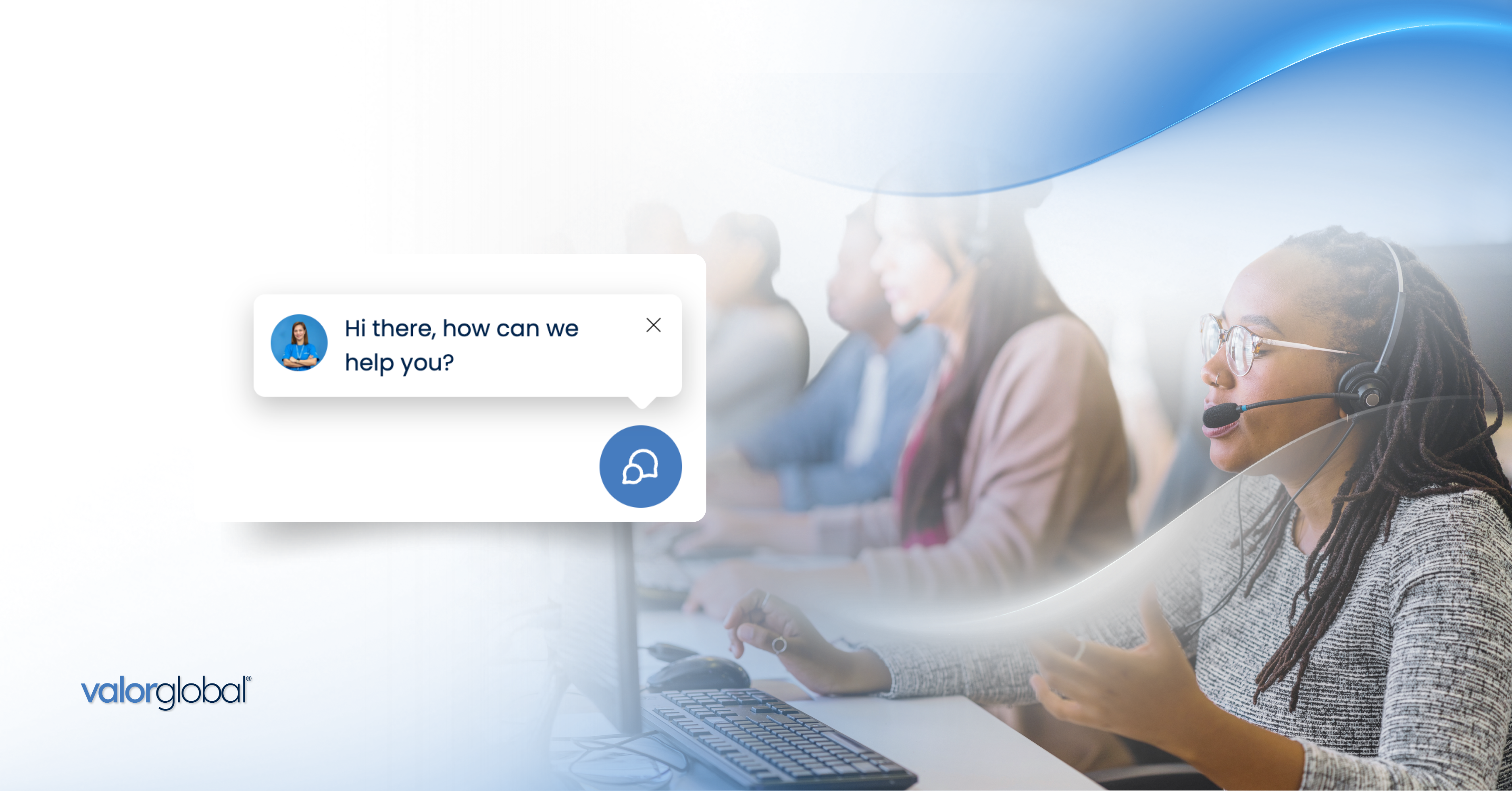
Performance Analytics: Measuring and Improving Customer Service ROI
Discover how to measure customer service performance and ROI through comprehensive analytics and data-driven insights.

You keep facing the same issues with customer complaints—reacting only after they’re unhappy. Imagine shifting to a proactive approach that sees problems coming before they even start. Our guide to proactive customer service reveals how you can anticipate customer needs, cutting issues by 40% and boosting satisfaction by 30%. Dive into a six-step framework using predictive tools like data analysis and early warning systems. Ready to transform your service? Discover how to prevent problems before they arise.
The proactive service revolution is reshaping how businesses interact with customers. This section explores the key differences between proactive and reactive service approaches, their impact on customer satisfaction, and the competitive advantage gained through anticipation.
Proactive customer service involves anticipating and addressing customer needs before they become issues. Reactive service, in contrast, responds to problems after they occur.
Data shows that companies implementing proactive strategies see a 40% reduction in customer complaints and a 30% increase in satisfaction scores. This significant improvement stems from addressing potential issues before they escalate.
A survey of 1,000 customers revealed that 68% prefer brands that proactively reach out with useful information or assistance. This preference translates to higher loyalty rates and increased customer lifetime value.
Proactive service strategies have a profound effect on customer satisfaction and overall business performance. Companies that adopt these approaches report higher Net Promoter Scores (NPS) and customer retention rates.
A study by Forrester Research found that businesses using proactive service techniques experienced a 20% increase in cross-sell and upsell opportunities. This boost in sales is attributed to improved customer trust and engagement.
Furthermore, proactive service reduces support costs by minimizing the number of inbound customer inquiries. Organizations report an average 25% decrease in support tickets after implementing proactive measures.
Anticipating customer needs creates a significant competitive advantage in today’s market. Businesses that excel at proactive service often become industry leaders in customer experience.
By identifying and resolving potential issues before they affect customers, companies can differentiate themselves from competitors. This approach leads to higher customer loyalty and positive word-of-mouth marketing.
Proactive service also allows businesses to stay ahead of market trends and customer expectations. By continuously analyzing data and predicting future needs, companies can adapt their offerings and maintain a competitive edge.
A comprehensive proactive service framework enables businesses to anticipate and address customer needs effectively. This section outlines the key components of such a framework, from data analysis to outcome measurement.
Data analysis forms the foundation of proactive customer service. It involves collecting and examining customer interactions, behavior patterns, and historical data to identify trends and potential issues.
Advanced analytics tools process large volumes of data from various sources, including customer support tickets, social media interactions, and product usage logs. These tools use statistical methods and machine learning algorithms to uncover hidden patterns and correlations.
By recognizing recurring issues or common customer pain points, businesses can proactively develop solutions and improve their products or services. This data-driven approach allows companies to stay ahead of customer needs and minimize potential problems.
Predictive modeling uses historical data and statistical algorithms to forecast future events or behaviors. In the context of proactive customer service, it helps anticipate customer needs and potential issues.
These models analyze factors such as customer demographics, purchase history, and interaction patterns to predict future behavior. For example, a model might forecast when a customer is likely to need a product upgrade or when they might encounter a specific problem.
By leveraging predictive insights, businesses can take proactive steps to address customer needs before they arise. This approach improves customer satisfaction and reduces the likelihood of negative experiences.
Early warning systems are crucial for identifying potential issues before they escalate. These systems monitor various data points and trigger alerts when certain conditions are met.
For example, an early warning system might detect unusual patterns in network traffic that could indicate an impending service outage. By identifying these signs early, businesses can take preventive action and minimize disruption to customers.
These systems often use real-time data processing and machine learning algorithms to detect anomalies quickly. This rapid detection allows companies to respond swiftly and effectively to emerging issues.
Once potential issues are identified, businesses need clear intervention strategies and action plans. These plans outline specific steps to address problems and prevent them from affecting customers.
Effective intervention strategies are tailored to different types of issues and customer segments. They might include proactive communication, preventive maintenance, or personalized assistance.
Action plans should be detailed and assign clear responsibilities to team members. They often include escalation procedures for more complex issues and guidelines for customer communication throughout the intervention process.
Proactive communication is a key component of preventive customer service. It involves reaching out to customers with relevant information or assistance before they encounter problems.
This approach might include sending maintenance reminders, providing tips for optimal product use, or alerting customers to potential issues based on their usage patterns. The goal is to empower customers with information and support that prevents problems from occurring.
Effective preventive communication requires careful timing and personalization. Messages should be relevant, concise, and delivered through the customer’s preferred channels.
Measuring the outcomes of proactive service initiatives is crucial for continuous improvement. This process involves tracking key performance indicators (KPIs) and analyzing the impact of preventive actions.
Common metrics include reduction in support tickets, improvement in customer satisfaction scores, and changes in customer retention rates. By comparing these metrics before and after implementing proactive strategies, businesses can quantify the impact of their efforts.
Regular analysis of these outcomes allows companies to refine their proactive service approach. This ongoing optimization ensures that strategies remain effective and aligned with changing customer needs.
Predictive technologies and tools are essential for implementing effective proactive customer service strategies. This section explores the key technologies that enable businesses to anticipate and address customer needs.
Analytics platforms are the backbone of proactive customer service. They collect, process, and analyze vast amounts of customer data from multiple sources.
These platforms use advanced algorithms to identify patterns, trends, and anomalies in customer behavior. They can process structured data (like purchase history) and unstructured data (like customer comments or social media posts).
By providing actionable insights from complex data sets, analytics platforms enable businesses to make data-driven decisions and predict future customer needs accurately.
Machine learning algorithms play a crucial role in predictive customer support. These algorithms can learn from historical data and improve their predictions over time.
For example, a machine learning model might analyze past customer interactions to predict which customers are at risk of churning. As the model processes more data, its predictions become increasingly accurate.
These algorithms can also identify complex patterns that might not be apparent to human analysts, allowing businesses to uncover hidden insights and opportunities for proactive service.
Customer behavior tracking systems monitor and analyze how customers interact with products, services, and support channels. These systems provide valuable insights into customer preferences and pain points.
By tracking customer actions across various touchpoints, businesses can build comprehensive customer profiles. These profiles help in predicting future behavior and tailoring proactive service strategies.
For instance, a behavior tracking system might notice that a customer frequently visits the FAQ page for a specific product feature. This insight could trigger a proactive outreach to offer assistance or additional information about that feature.
Risk assessment tools help businesses identify potential issues before they impact customers. These tools analyze various factors to predict the likelihood and potential impact of different risks.
For example, in the financial services industry, risk assessment tools might analyze transaction patterns to predict and prevent fraudulent activities. In the utilities sector, these tools could predict equipment failures based on usage data and maintenance history.
By accurately assessing and predicting risks, businesses can prioritize their proactive efforts and allocate resources more effectively.
Automated alert systems are critical for timely response to potential issues. These systems monitor key indicators and trigger notifications when predefined thresholds are met.
For instance, an automated system might alert support teams when a customer’s usage pattern indicates they’re struggling with a product feature. This prompt allows the team to reach out proactively and offer assistance.
These systems can be customized to send alerts through various channels, ensuring that the right people receive critical information at the right time. This rapid notification enables swift action to prevent or mitigate potential problems.
Effective intervention strategies are crucial for translating predictive insights into actionable proactive service. This section explores various approaches to implementing proactive customer support.
Proactive outreach involves initiating contact with customers to address potential issues or provide valuable information. This approach shifts the paradigm from waiting for customers to reach out to actively engaging them.
Effective outreach methodologies include personalized emails, targeted SMS messages, or even phone calls for high-value customers. The key is to tailor the outreach method to the customer’s preferences and the nature of the potential issue.
For example, a software company might proactively reach out to users who haven’t accessed a new feature, offering a personalized tutorial or assistance. This proactive approach can increase feature adoption and overall customer satisfaction.
Preventive maintenance is particularly relevant for businesses that provide physical products or services. It involves regular check-ups and maintenance to prevent issues before they occur.
For instance, a home security company might offer annual system checks to ensure all components are functioning correctly. This proactive approach can prevent system failures and enhance customer trust.
In the digital realm, preventive maintenance might involve regular software updates or data backups. By ensuring systems are always up-to-date and secure, businesses can minimize disruptions and maintain high service quality.
Providing educational content is an effective proactive strategy that empowers customers to prevent issues on their own. This approach involves creating and distributing informative materials that address common questions or challenges.
Educational content can take various forms, such as video tutorials, detailed guides, or interactive FAQs. The goal is to anticipate customer needs and provide solutions before problems arise.
For example, a telecom company might create a series of videos explaining how to optimize home Wi-Fi setups. By proactively addressing this common issue, the company can reduce support calls and improve customer satisfaction.
Risk mitigation involves identifying potential risks and taking steps to reduce their likelihood or impact. In the context of proactive customer service, this often means addressing issues that could lead to customer dissatisfaction or churn.
Techniques might include offering alternative solutions when a product is out of stock, or proactively extending subscription periods to compensate for service interruptions. The key is to anticipate potential risks and have strategies in place to address them quickly.
For instance, an airline might proactively rebook passengers on alternative flights when delays or cancellations are anticipated due to weather conditions. This proactive approach can significantly reduce customer frustration and support load during disruptions.
Issue prevention frameworks provide a structured approach to identifying and addressing potential problems before they affect customers. These frameworks typically involve regular audits, customer feedback analysis, and trend monitoring.
An effective framework might include regular reviews of customer support tickets to identify recurring issues. By addressing these common problems at their source, businesses can prevent future occurrences and improve overall service quality.
For example, a software company might implement a framework that includes regular code reviews and automated testing to catch potential bugs before they reach customers. This proactive approach can significantly reduce the number of issues customers encounter.
Effective communication is crucial in proactive customer service. This section explores strategies for timing, channel selection, personalization, and frequency management in proactive outreach.
The timing of proactive contact can significantly impact its effectiveness. The goal is to reach customers at moments when the information or assistance is most relevant and valuable to them.
For instance, a retail company might send a proactive message about winter gear just as the season changes. This timely communication anticipates customer needs and provides value at the right moment.
Data analytics play a crucial role in determining optimal timing. By analyzing customer behavior patterns, businesses can identify the best times to reach out with proactive communications.
Choosing the right communication channel is essential for effective proactive service. Different customers prefer different channels, and the nature of the message can also influence channel selection.
Email might be suitable for detailed product information, while SMS could be more effective for urgent updates. Social media platforms can be ideal for broader announcements or community engagement.
It’s important to respect customer preferences and provide options for how they receive proactive communications. This approach ensures that messages are received and appreciated rather than seen as intrusive.
Personalization is key to making proactive communications feel valuable rather than generic. This involves tailoring the content, tone, and context of messages to individual customers or segments.
For example, a streaming service might send personalized recommendations based on a customer’s viewing history. This level of personalization makes the proactive communication feel relevant and valuable.
Relevance also involves considering the customer’s journey and current context. A proactive message about account security might be particularly relevant to a customer who recently changed their password.
Managing the frequency of proactive communications is crucial to avoid overwhelming customers. The goal is to strike a balance between being helpful and being intrusive.
Too frequent communications can lead to fatigue and may cause customers to ignore or opt out of future messages. On the other hand, infrequent contact might miss opportunities to provide timely assistance.
Best practices include setting clear expectations about communication frequency, allowing customers to set their preferences, and continually monitoring engagement metrics to optimize frequency.
Proactive customer service strategies can be applied across various industries, each with unique challenges and opportunities. This section explores specific applications in key sectors.
In healthcare, proactive service often takes the form of preventive care. This approach focuses on identifying health risks early and taking steps to prevent or manage potential issues.
Healthcare providers use data analytics to identify patients at risk of certain conditions based on factors like age, family history, and lifestyle. They can then proactively reach out with personalized health recommendations or screening reminders.
For example, a healthcare system might use predictive analytics to identify patients at high risk of developing diabetes. They could then proactively offer nutrition counseling or lifestyle modification programs to these patients, potentially preventing the onset of the disease.
Utilities companies can leverage proactive service to prevent outages and minimize disruptions to customers. This approach involves using data from smart meters and other sensors to predict and prevent potential issues.
For instance, a power company might use predictive maintenance algorithms to identify transformers at risk of failure. By proactively replacing or repairing these components, they can prevent widespread outages.
Additionally, utilities can use proactive communication to inform customers about planned maintenance or potential weather-related disruptions. This transparency helps customers prepare and reduces the volume of support calls during incidents.
In the financial sector, proactive service often focuses on fraud prevention. Banks and credit card companies use advanced analytics to detect unusual patterns that might indicate fraudulent activity.
These systems can analyze transaction data in real-time, flagging suspicious activities for further investigation. When potential fraud is detected, the institution can proactively contact the customer to verify the transaction or take preventive action.
For example, a bank might notice a series of unusual international transactions on a customer’s account. They could proactively freeze the card and contact the customer to verify the activity, potentially preventing significant financial loss.
The travel industry can benefit greatly from proactive service, particularly in managing disruptions. Airlines, hotels, and travel agencies can use predictive analytics to anticipate potential issues and take preemptive action.
For instance, an airline might use weather forecasts and historical data to predict flight delays. They could then proactively rebook affected passengers on alternative flights, reducing frustration and support load during the disruption.
Travel companies can also use proactive communication to keep travelers informed about changes to their itineraries, local conditions, or travel requirements. This approach helps travelers prepare and reduces anxiety associated with unexpected changes.
In the home security sector, proactive service focuses on preventing security threats before they occur. This involves using smart technology and data analysis to identify potential risks and alert homeowners or security personnel.
For example, a home security system might use machine learning algorithms to distinguish between normal household activity and suspicious behavior. It could then send proactive alerts to homeowners or security teams when unusual patterns are detected.
Additionally, home security companies can proactively reach out to customers with personalized safety tips based on local crime statistics or seasonal trends. This approach helps customers feel more secure and demonstrates the value of the service.
In the telecommunications industry, proactive service often revolves around network optimization to prevent service disruptions and ensure high-quality connections for customers.
Telecom companies use real-time data analytics to monitor network performance and predict potential issues. This allows them to take preventive action before customers experience service degradation.
For instance, a telecom provider might detect early signs of network congestion in a specific area. They could then proactively reroute traffic or increase capacity to maintain service quality. Additionally, they might send proactive notifications to customers in the affected area, explaining the situation and any temporary measures being taken.
Proactive customer service represents a paradigm shift in how businesses interact with their customers. By anticipating needs, preventing issues, and providing timely assistance, companies can significantly enhance customer satisfaction and loyalty. The strategies and tools outlined in this guide provide a roadmap for implementing effective proactive service across various industries. As customer expectations continue to evolve, businesses that embrace proactive approaches will be well-positioned to deliver exceptional experiences and maintain a competitive edge in their markets.
Transform your customer service from reactive to proactive. Discover how Valor Global’s predictive service strategies reduce customer issues by 40% while increasing satisfaction scores by 30%.

Discover how to measure customer service performance and ROI through comprehensive analytics and data-driven insights.

Learn how to deliver exceptional customer support across international markets with cultural adaptation and global expertise.

Learn how to map and optimize customer touchpoints to create seamless experiences that drive satisfaction and loyalty.

Learn how to attract, develop, and retain top customer service talent that drives exceptional business results.

Discover how advanced analytics and AI transform customer service data into strategic business intelligence.

